Generator power: what happens and how to choose the right one?
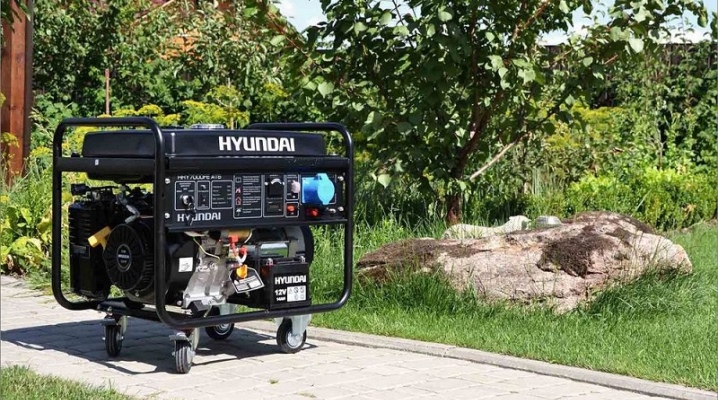
The problem of rolling or occasional power outages in some regions has not gone away, even despite the 21st century outside the window, and in the meantime, a modern person can no longer imagine himself without electrical appliances. The solution to the problem can be the purchase of your own generator, which in which case will insure its owner.
At the same time, it is necessary to choose it not only by price, but also by common sense - so that, without overpaying, be confident in the ability of the unit to perform the assigned tasks. To do this, you should pay attention to the power of the generator.

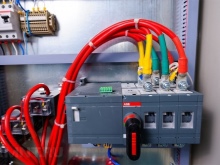
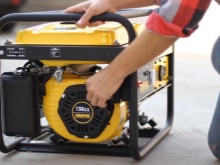
What power do different types of generators have?
Regardless of the fuel used, absolutely all generators are divided into household and industrial ones. The line between them is very conditional, however, such a classification allows a beginner in this matter to immediately discard a significant part of the models that will definitely not be interesting.
Household
Most often, household generators are bought - equipment, the task of which will be a safety net in case one household is disconnected from the power supply. The upper power limit for such equipment is usually called 5-7 kW, but here you need to understand that the needs of households for electricity can be completely different. Even very modest models up to 3-4 kW can be found on sale - they will be relevant in the country, which is a miniature one-room room with electrical appliances that can be counted on the fingers of one hand. The house can be two-storey and large, with an attached garage and a comfortable gazebo - not only that 6-8 kW will not be enough, but even with 10-12 kW, you may already have to save!
People who have never delved into the characteristics of electrical appliances should note that power, measured in watts and kilowatts, should not be confused with voltage, measured in volts.
Indicators of 220 or 230 volts are typical for single-phase equipment, and 380 or 400 V for three-phase equipment, but this is not the indicator that we are considering in this article, and it has nothing to do with the power of a personal mini-power plant.
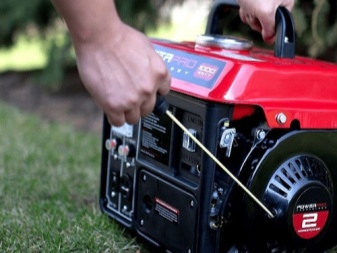
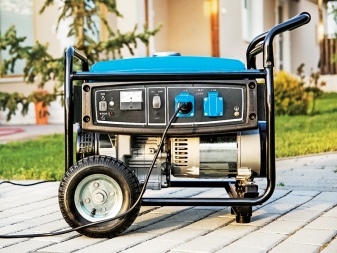
Industrial
From the name of the category, it is obvious that this type of equipment is already needed to service certain industrial enterprises. Another thing is that a business can be small and use relatively little equipment - even comparable to a typical residential building. At the same time, a factory or workshop cannot afford downtime, therefore it needs equipment with a good margin of power. Low-power industrial generators are usually categorized as semi-industrial - they start at about 15 kW and end somewhere around 20-25 kW.
Anything more serious than 30 kW can already be considered a full-fledged industrial equipment. - at least it's hard to imagine a household that needs that much energy. At the same time, it is difficult to talk about the upper power ceiling - we will only clarify that there are models for both 100 and even 200 kW.
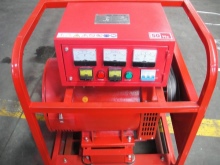
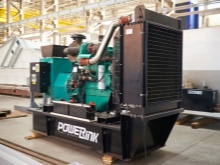
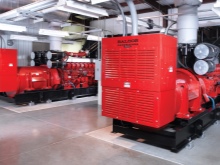
General rules for calculating the load
At first glance, it is not so difficult to calculate the potential load on a generator for a private house, but there are several subtleties that have burned (literally and figuratively) many home power plants for many owners. Consider the catch.
Active load
Many of the readers may have guessed that the easiest way to find the load on a generator is to calculate the total power of all electrical appliances in the building. This approach is only partially correct - it shows only the active load. An active load is that power that is spent without using an electric motor and does not imply rotation of large parts or serious resistance.
For example, in an electric kettle, heater, computer and ordinary light bulb, absolutely all of their power is included in the active load. All these devices, as well as others like them, always consume approximately the same amount of energy, which is indicated as power somewhere on the box or in the instructions.
However, the catch lies in the fact that there is also a reactive load, which is often forgotten to take into account.
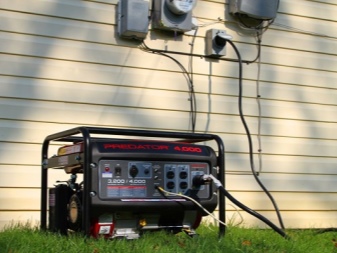

Reactive
Electrical appliances equipped with full-fledged motors tend to consume significantly (sometimes several times) more energy at the time of switching on than during operation. Maintaining the engine is always easier than overclocking it, therefore, at the moment of its switching on, such a technique can easily turn off the lights in the whole house. - you might have seen something similar in the countryside when you tried to turn on a pump, a welding machine, construction equipment such as a hammer drill or a grinder, the same electric saw. By the way, the refrigerator works exactly the same way. At the same time, a lot of energy is needed only for a jet start, literally for a second or two, and in the future the device will create only a relatively small active load.
Another thing is that the buyer, mistakenly taking into account only the active power, runs the risk of being left without light at the time of launching the reactive technology, and it’s also good if the generator after such a focus is in working order. In pursuit of a consumer who is interested in buying an economical unit, the manufacturer in the most conspicuous place can indicate precisely the active power, and then a home power plant, bought with the expectation of only active load, will not save. In the instructions for each reactive device, you should look for an indicator known as cos Ф, also known as power factor. The value there will be less than one - it shows the share of active load in total consumption. Having found the value of the latter, we divide it by cos Ф - and we get the reactive load.
But that's not all - there is also such a thing as inrush currents. It is they who create the maximum load in reactive devices at the moment of switching on. They need to be calculated using coefficients that, on average, can be found on the Internet for each type of device. Then our load indicators must be multiplied by this factor. For a conventional TV, the value of the inrush current ratio is predictably equal to one - this is not a reactive device, therefore there will be no additional load at startup. But for a drill, this coefficient is 1.5, for a grinder, a computer and a microwave oven - 2, for a puncher and a washing machine - 3, and for a refrigerator and an air conditioner - all 5! Thus, the cooling equipment at the moment of switching on, even for a second, itself consumes several kilowatts of power!
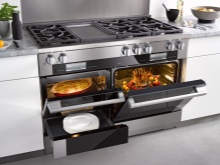

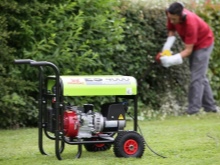
Rated and maximum power of the generator
We have determined how to calculate the need for your home for generator power - now you need to understand what indicators of an autonomous power plant should be enough. The difficulty here is that there will be two indicators in the instruction: nominal and maximum. The rated power is a normal indicator laid down by the designers, which the unit is obliged to deliver constantly without any problems. Roughly speaking, this is the power at which the device can work constantly, without failing prematurely. It is this indicator that is most important if appliances with an active load prevail in the house, and if the nominal power completely covers the needs of the household, you can not worry at all.
The maximum power is the indicator that the generator is still capable of delivering, but for a short time. At this moment, he still withstands the burden placed on him, but is already working to wear and tear. If the going beyond the rated power within the maximum occurred for a few seconds due to inrush currents, then this is not a problem, but the unit should not constantly operate in this mode - it will simply fail in a couple of hours. The difference between the nominal and maximum power of the unit is usually not too large and is about 10-15%. Nevertheless, with a power of several kilowatts, such a reserve may be enough to launch an "extra" reactive device. At the same time, it is clear that the electric generator must have a certain margin of safety. It is better to choose a model where even the rated power exceeds your needs, otherwise the decision to buy any equipment will lead to the fact that you will go beyond the capabilities of the power plant.
Please note that some unscrupulous manufacturers only list one generator power rating. On the box, the number is almost always the same, so you need to look at the instructions. Even if there the abstract "power" is indicated by only one number, it is better not to choose the unit - we are probably talking about the maximum indicator, and, accordingly, the nominal buyer does not know at all.
The only exception is if the manufacturer indicated a power factor less than one, for example 0.9, then simply multiply the power by this figure and get the nominal value.
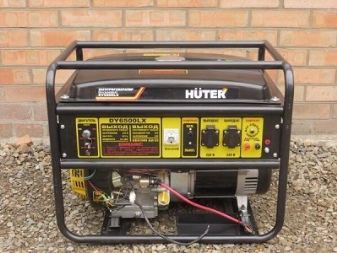

What is permissible to connect to low-power devices?
Many consumers, having read all of the above, are sincerely surprised why then there are devices with a capacity of 1-2 kW on sale. In fact, there is even benefit from them - if, for example, the power plant is a backup power source somewhere in the garage. There, more is not required, and a low-power unit, of course, is cheaper.
Another option for operating such equipment is even home use, but, as they say, wisely. If you buy a generator precisely as a safety net, and not for permanent use, then it turns out that it is not necessary to load it to the fullest - the owner knows that the power supply will soon be restored, and until that moment all energy-consuming processes can be delayed. In the meantime, you can not sit in the dark, but turn on the lighting, watch TV or use a PC, connect a low-power heater, make coffee in a coffee maker - you must admit that it is much more comfortable to wait for the completion of repairs in such conditions! Thanks to such a generator, the alarm will continue to function.
In fact, a low-power electric generator allows you to connect everything except powerful reactive equipment with noticeable inrush currents. Lamps of most types, even incandescent ones, often fit a maximum of 60-70 W per piece - a kilowatt generator can illuminate the whole house. The same large fan with a power of 40-50 W, even with starting currents several times more powerful, should not create overloads. The main thing is not to use refrigerators and air conditioners, construction and garden equipment, washing machine and pumps. At the same time, theoretically, some reactive technology can still be used if everything is calculated correctly and all other devices are turned off before starting it, leaving space for inrush currents.



Calculation example
In order not to overpay for a too expensive super-powerful generator in vain, divide all the units in the house into categories: those that must work without fail and without interruption, and those that can not be used in the event of a transition to generator support. If power outages are not everyday or too long, exclude the third category from the calculations altogether - wash and drill later.
Further, we consider the power of the really necessary electrical devices, taking into account their starting currents. For example, we cannot live without simultaneously working lighting devices (200 W in total), a TV (another 250) and a microwave oven (800 W).Light - ordinary incandescent lamps, in which the coefficient of inrush currents is equal to one, the same is true for the TV, so that their power is no longer multiplied by anything. The microwave has a starting current factor equal to two, therefore we multiply its usual power by two - at a short start-up moment it will require 1600 W from the generator, without which it will not work.
We sum up all the numbers and we get 2050 W, that is, 2.05 kW. In an amicable way, even the rated power should not be constantly selected all - experts usually recommend loading the generator no higher than 80%. Thus, we add to the indicated number 20% of the power reserve, that is, another 410 watts. In total, the recommended power of our generator will be 2460 watts - 2.5 kilowatts, which will even allow us, if necessary, to add some other equipment to the list that is not highly gluttonous.
Particularly attentive readers probably noticed that we included 1600 W in the calculations for a microwave oven, although it consumes so much only at the moment of starting due to inrush currents. It may be tempting to save even more by buying a 2 kW generator - this figure even includes a twenty percent safety factor, just at the moment the oven is turned on, you can turn off the same TV. Some enterprising citizens do this, but, in our opinion, it is better not to do this, because it is not very convenient.
In addition, at some point, a forgetful owner or his uninformed guest will simply overload the generator, and its service life will be reduced, and in the most severe cases, the device may fail immediately.















The comment was sent successfully.